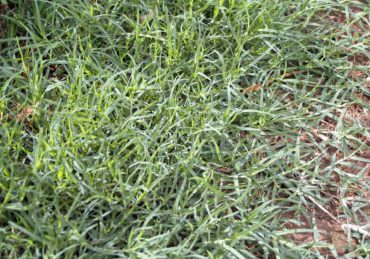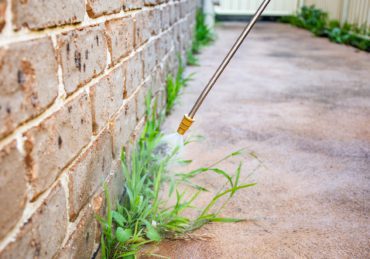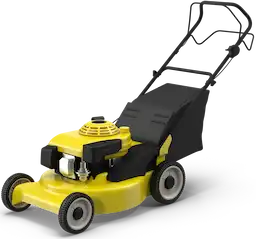Aerating your lawn is essential for enhancing soil health and promoting vigorous grass growth. Begin by evaluating your lawn for compacted areas, which restrict water and nutrient absorption. The best times to aerate depend on your grass type: early spring or fall for cool-season grasses, and late spring to early summer for warm-season. Utilize a core aerator for best results, removing soil plugs, or choose a spike aerator for a quicker, less intensive method. After aeration, water lightly and apply a balanced fertilizer. For further details on methods and preparation, exploration of specific techniques can provide valuable insights.
What is Lawn Aeration and Why Does Your Lawn Need It?
Lawn aeration is a critical process that enhances the movement of air, water, and nutrients to grass roots, promoting a healthier lawn. Studies from University of Maryland Extension highlight how aeration can alleviate soil compaction, improve water infiltration, and promote stronger grass roots.
Understanding the benefits of aeration will help you create a lush, resilient yard that can withstand environmental stresses.
The Benefits of Lawn Aeration
While many homeowners may overlook the significance of lawn aeration, this essential process plays an important role in promoting a healthy and vibrant lawn. Lawn aeration involves perforating the soil with small holes to enhance air, water, and nutrient penetration to grass roots, ultimately fostering healthier growth.
One of the primary benefits of aeration is its ability to alleviate soil compaction. Compacted soil restricts essential resources from reaching grass roots, often resulting in thin, pale, and patchy lawns. By aerating, you improve water absorption and nutrient uptake, which is especially crucial for lawns experiencing heavy foot traffic or those with dense thatch buildup exceeding 0.5 inches.
Moreover, lawn aeration encourages beneficial microorganisms within the soil, contributing to overall lawn health and resilience against drought and disease.
Regular aeration promotes deeper root growth, resulting in a stronger lawn that can withstand various environmental stressors. In conclusion, the benefits of lawn aeration extend beyond immediate aesthetics, leading to a robust and thriving landscape that is both beautiful and sustainable.
Signs Your Lawn Needs Aeration
How can you tell if your lawn is in need of aeration? One of the primary signs is the presence of compacted soil, which often feels hard underfoot and restricts water absorption, resulting in surface pooling.
If you notice that your grass appears thin, patchy, or exhibits stunted growth despite regular watering and fertilization, these symptoms may indicate that your lawn is not receiving adequate root nourishment due to compacted soil.
Additionally, if thatch buildup exceeds 0.5 inches, it can impede the flow of important air, water, and nutrients to the grass roots, signaling the necessity for aeration.
High foot traffic areas, such as play zones or pathways, are particularly prone to compaction and should be prioritized for aeration to restore healthy growth.
Regularly observing your lawn for signs of stress, such as browning or wilting, is essential, as healthy grass requires ideal access to air, water, and nutrients.
Choosing the Right Lawn Aeration Method
Selecting the appropriate lawn aeration method is essential for promoting healthy grass growth.
Core aeration, which removes soil plugs, is often preferred for its effectiveness in alleviating compaction, while spike aeration offers a simpler alternative by perforating the soil without removing material.
Furthermore, manual aeration methods cater to smaller spaces and specific needs, allowing homeowners to choose a strategy that best fits their lawn care requirements.
Core Aeration (Plug Aeration)
Core aeration, also known as plug aeration, is a highly effective method for improving lawn health by alleviating soil compaction. This technique employs a core aerator to remove small soil plugs, typically 2-3 inches deep and 0.5-0.75 inches wide. By extracting these soil plugs, core aeration enhances the penetration of air, water, and nutrients into the root zone of the grass, promoting healthier growth.
This method is particularly advantageous for compacted lawns, as it allows for deeper soil aeration compared to spike aeration, which only perforates the soil without removing any material.
To achieve ideal results, core aeration should be conducted during the growing season; cool-season grasses thrive with early spring or fall aeration, while warm-season grasses benefit from late spring or early summer applications.
After the process, it is essential to leave the soil plugs on the lawn’s surface. As these plugs decompose, they return essential nutrients to the soil, further enhancing the overall health of the lawn.
For best practices, homeowners are advised to aerate every 1-3 years, with high-traffic areas potentially needing more frequent attention.
Spike Aeration
Although there are various methods to aerate a lawn, spike aeration is a popular choice for homeowners seeking a budget-friendly and straightforward solution. This method involves using a spike aerator, which creates holes in the soil to allow air, water, and nutrients to penetrate effectively.
Unlike core aeration, spike aeration does not remove soil plugs, making it quicker and easier for smaller lawn areas.
However, it is vital to note that while spike aerators can address minor aeration needs, they may inadvertently lead to increased soil compaction around the holes created. For lawns experiencing significant compaction, core aeration may provide more substantial benefits by removing soil plugs and alleviating compaction more effectively.
To maximize the effectiveness of spike aeration, it is important to confirm the soil is moist prior to use, as dry conditions can hinder penetration and reduce results.
Furthermore, combining spike aeration with regular lawn maintenance, including thorough watering and fertilization, will enhance grass health and recovery.
Manual Lawn Aeration Methods
When it comes to maintaining a healthy lawn, understanding the various manual aeration methods available is vital for achieving ideal results. Among the most effective tools are core aerators, which remove soil plugs to enhance air and nutrient penetration.
These manual aerators extract 2-3 inch deep and 0.5-0.75 inch wide plugs, effectively alleviating soil compaction and promoting healthier grass growth.
In contrast, spike aerators create holes in the soil without removing any material, which can inadvertently lead to increased compaction. While they are simpler to use, core aerators are generally recommended for more significant aeration needs.
For targeted applications, a garden fork can be employed to aerate specific problem areas, allowing for precise intervention where necessary.
For those seeking a cost-effective solution, aerator shoes equipped with spikes provide a convenient option for light aeration while walking across the lawn.
Regardless of the chosen method, it’s advisable to make multiple passes over compacted areas to guarantee thorough coverage and maximize the effectiveness of manual aerators, ultimately leading to a healthier, more vibrant lawn.
How to Aerate Your Lawn Yourself
To successfully aerate your lawn, it is vital to begin with proper preparation, which includes mowing and watering.
Next, you’ll employ the chosen aeration method to effectively enhance soil health.
Finally, post-aeration care is important for maximizing the benefits and promoting vigorous grass growth.
Preparing Your Lawn for Aeration
Preparing your lawn for aeration is important for achieving optimal results, as it sets the foundation for effective soil penetration and healthy grass growth.
Begin by mowing your lawn to a height of 2-3 inches. This guarantees the aerator can easily penetrate the soil, promoting ideal airflow and nutrient uptake.
A few days before aeration, water your lawn thoroughly, aiming for at least one inch of moisture. This softens the soil, making it easier for the aerator to penetrate deeply.
Furthermore, clear your lawn of any debris, such as sticks and leaves, to allow unobstructed access for the aerator.
Before starting, mark any hidden obstacles, like sprinkler heads or utility lines, with flags to prevent damage during the process.
Timing is also significant; aim to aerate when the soil is moist but not overly saturated, which will maximize aeration effectiveness while minimizing soil compaction issues.
Aerating Your Lawn
Successfully aerating your lawn requires careful execution of several key steps that enhance soil health and promote vigorous grass growth.
Begin by mowing your lawn to a height of 2-3 inches and watering it thoroughly 1-2 days prior to aeration. This moisture softens the soil, making it easier for the aerator to penetrate.
Select the appropriate aerator for your needs: plug aerators are preferred for their effectiveness in removing soil cores, while spike aerators may suffice for smaller areas but can worsen soil compaction.
During the aeration process, make multiple passes over the lawn in one direction, then cross-hatch with a perpendicular pass to create a checkerboard pattern, ensuring even coverage.
After aerating, leave the soil plugs on the lawn to decompose, enriching the soil with organic material.
Gently water the area to settle the plugs and promote healing. This step is essential for maintaining soil moisture and encouraging grass recovery.
Following aeration, consider fertilizing and overseeding to enhance growth, allowing your lawn to flourish in the following weeks.
Regular monitoring will reveal improvements, ensuring your efforts in aerating yield the desired results.
Post-Aeration Lawn Care
Effective post-aeration lawn care is essential for maximizing the benefits of the aeration process and ensuring robust grass growth. After aeration, leave the soil plugs on the lawn; they will decompose and return valuable nutrients to the soil, enhancing overall grass health.
Begin by lightly watering the lawn to help settle the soil plugs, promoting their decomposition while avoiding waterlogging.
In addition to watering, apply a balanced, slow-release fertilizer immediately following aeration. This step replenishes essential nutrients and supports vigorous grass growth.
It is also vital to limit foot traffic on the lawn for at least two weeks post-aeration to allow the grass to recover and prevent soil compaction.
During the following weeks, monitor the lawn for improvements in thickness and color, adjusting care practices as needed based on its health.
By focusing on effective post-aeration lawn care, you can create an environment for your grass to thrive, ensuring ideal growth and a lush, vibrant lawn.
Implement these strategies to capitalize on the benefits of aeration and foster a healthier landscape.
How to Aerate a Lawn Without an Aerator
Although many homeowners use specialized equipment for lawn aeration, it is entirely possible to achieve effective results using simple tools already available in your garden shed.
One effective method involves using a garden fork to manually poke holes in the soil, ensuring they are spaced 2-4 inches apart. This allows air, water, and nutrients to penetrate more effectively. For smaller areas, a spade can be employed to remove 2-3 inch deep plugs of soil, mimicking core aeration and enhancing soil health.
Another option is to walk across the lawn in regular shoes; however, using aerator shoes with spikes can amplify the light aeration process as you walk.
Prior to manual aeration, thoroughly water the lawn 1-2 days in advance to soften the soil, making it easier to create holes while minimizing stress on the grass.
After completing the manual lawn aeration, leave the soil plugs on the surface to decompose and enrich the soil. Following this, consider fertilization to promote healthy grass growth, ensuring your lawn thrives following the aeration process.
Renting vs. Buying a Lawn Aerator
When deciding between renting or buying a lawn aerator, it’s essential to evaluate your specific needs and lawn care frequency.
Renting a lawn aerator typically costs between $30 to $75 per day, making it a viable option for homeowners who only aerate their lawns once or twice a year. This approach allows access to high-performance machines without the long-term commitment of ownership.
Conversely, purchasing a core aerator can range from $100 to over $1,000, which may be more economical for those with larger lawns or who require regular aeration. Owning an aerator offers the advantage of immediate access and flexibility, enabling you to aerate at favorable times without scheduling rentals or incurring additional costs.
Consider the frequency of aeration needed and the size of your lawn. If your aeration needs are annual or more frequent, investing in a core aerator may provide better long-term value.
Ultimately, the decision should align with your lawn maintenance routine, budget, and willingness to manage equipment ownership versus the convenience of renting when necessary.
Need Professional Lawn Aeration Services? Get a Quote Today!
Aerating your lawn is essential for maintaining healthy, thriving grass. While DIY aeration is possible, professional services ensure the job is done efficiently and at the right time for the best results. If you’re looking for expert lawn aeration services, you can get a quick, no-obligation quote from top-rated local providers.





